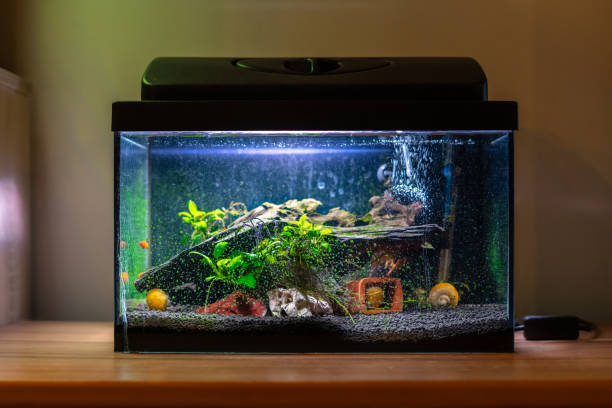AquaTech Wonders: Smart Devices Redefining Aquarium Maintenance
Smart aquarium gadgets can be used to improve tank stability, reduce the amount of time required for routine maintenance, or even all three.
The AWES System protects you against the effects of salinity changes and floods by using its smartphone application PC program, as well as liquid level sensors. Additionally, it automates other aspects of the aquarium.
Aquarium Technology
Technology is revolutionizing the way aquariums are designed and constructed. Aquarium owners can ensure their tanks are in good condition by using the latest the latest technology.
Monitoring the water quality is among the most crucial technology for aquariums. These systems monitor water parameters like the temperature, pH, and dissolved oxygen. They are able to identify and notify you when they observe any anomalies in the water’s chemical balance.

An increasingly popular feature used in aquariums is LED lighting. LED lighting is highly efficient and come with programmable lighting settings such as daylight and moonlight. They also can improve the health and color of your fish and corals. The LED light also uses less power than the conventional metal-halide light. New LED technology offers an array of color options that will suit the specific requirements of your marine setup.
Automated Feeding Systems
The automated feeders dispense a defined amount of feed on a programmed schedule. They are able to fit in the 2.8 L tanks utilized by the killifish farms (Aquaneering) and make use of the tank lid’s two foremost holes to distribute feed.
Automated feeding systems need to be utilized in conjunction with constant observation to make sure that fish are following their schedules that they have programmed and that the system functions properly. The novice farmer is likely to try and snare the feeder by switching it off, only to turn it back to feeding the first day, or not enough another.
Noncentralized feeders are operating in a power-saving mode up to the designated feeding time. When they reach that time, they will rotate an acrylic disc, which is between the LED array with green and photoresistors. Then, they will rotate on top of the drop region in order to confirm the loss of the 5 mg (Figure 1 figure supplement 1A). The onboard stepper motor measures the photoresistor resistance and determines whether a feed occurred.
Smart Monitoring Systems
The majority of aquariums require sophisticated equipment. This technology allows aquarists to manage and control these machines using a smartphone. It reduces the amount of time needed to check water quality, observe lighting, and feed fish.
There are two main varieties of smart aquariums which are controllers and monitors. Monitors are devices that track a parameter such as pH, temperature or turbidity. While a controller is not just able to keep track of it but also operate the devices that are based on this data.
A good example is a temperature controller which automatically shuts your heater off if the water temperatures exceed safe levels. Another example is a doser that can be set up to dose Fertilizers and Trace Elements. Additionally, it is capable of Balling Salts. Also, devices keep track of tank levels and evaporation and inform you of the level via an app for smartphones or a computer program.
Aquarium Controls that are WiFi-connected
There are a lot of things you need to monitor if you have the fish or saltwater aquarium. You should monitor things like the temperature of water and pH, lighting, and pump.
The most efficient way to automate this process is to use an aquarium control. The safety function be ca thuy sinh can be programmed to shut off the lights when temperatures rise to danger levels.
A smart aquarium system based on IoT will monitor all of the above parameters and can be tracked from anywhere via an application on mobile. This will help reduce effort required to keep a healthy fish tank and avoids the premature death of the fishes. If you have the correct controller for your aquarium, you will be able to instantly add modules and accessories to your tank when it expands.
Automated Water Change Systems
Water changes are an essential component of keeping fish in a aquarium. They replenish the vital minerals, get rid of waste and toxins, maintain water temperatures and salt levels and make sure that your tank remains at a proper temperature. Water-change systems that are smart automate the siphoning, replacement, and repurposing water from tanks to save both time and energy. Additionally, they reduce stress on your fish.
They are usually made comprising a controller and tubing that connects your aquarium to an intermittency pump. The tubing connects to a valve, which lets you control the flow of water through the tank and reservoir.
It is the Neptune Apex DOS is an perfect choice for an automatic aquarium water change system because it can be used as the Reef Controller as well as a Reef Controller. It also comes with many other attributes like an aquarium water level sensor as well as a sump level water sensor and a float switch to the reservoir, and more!
